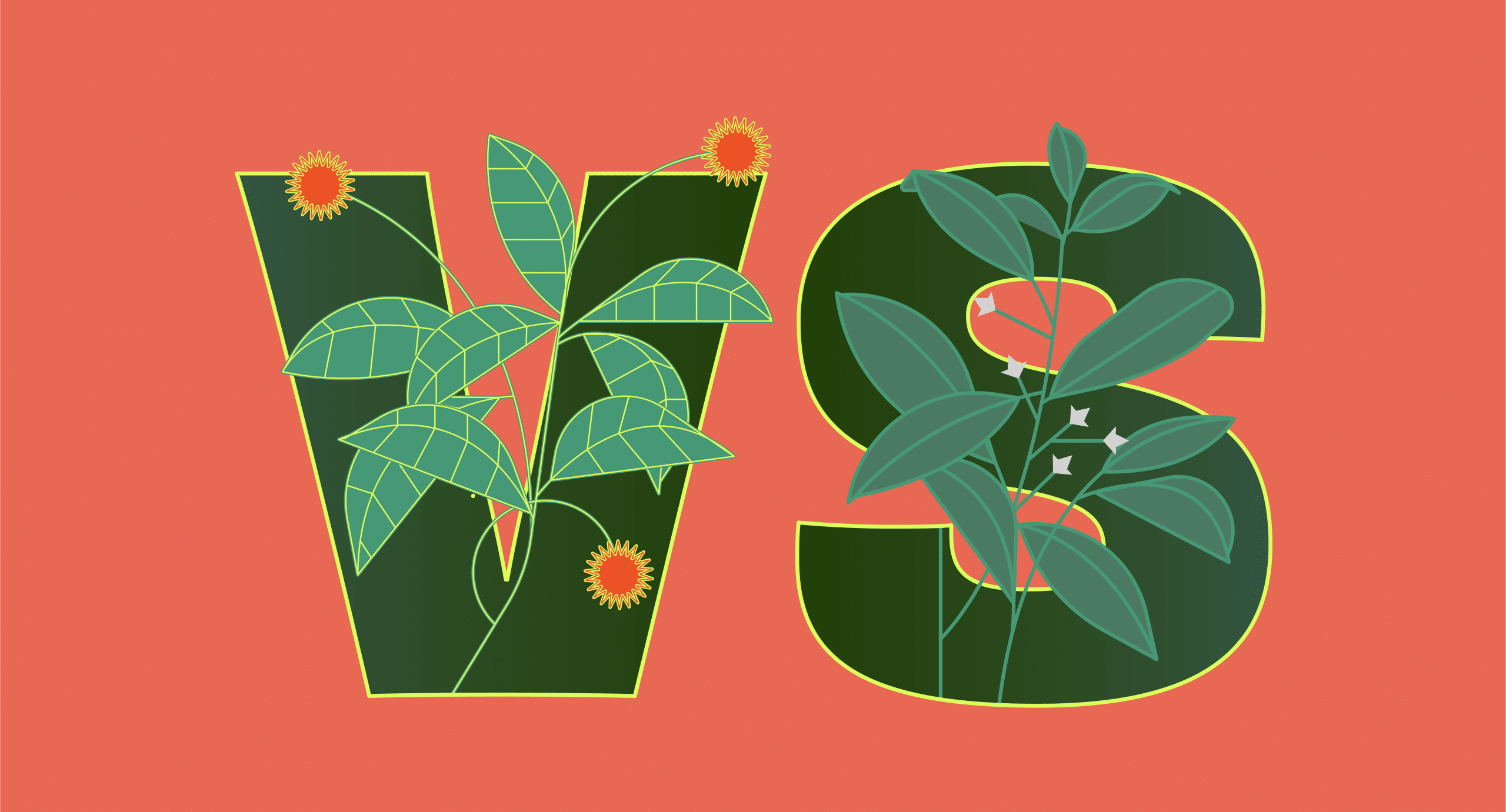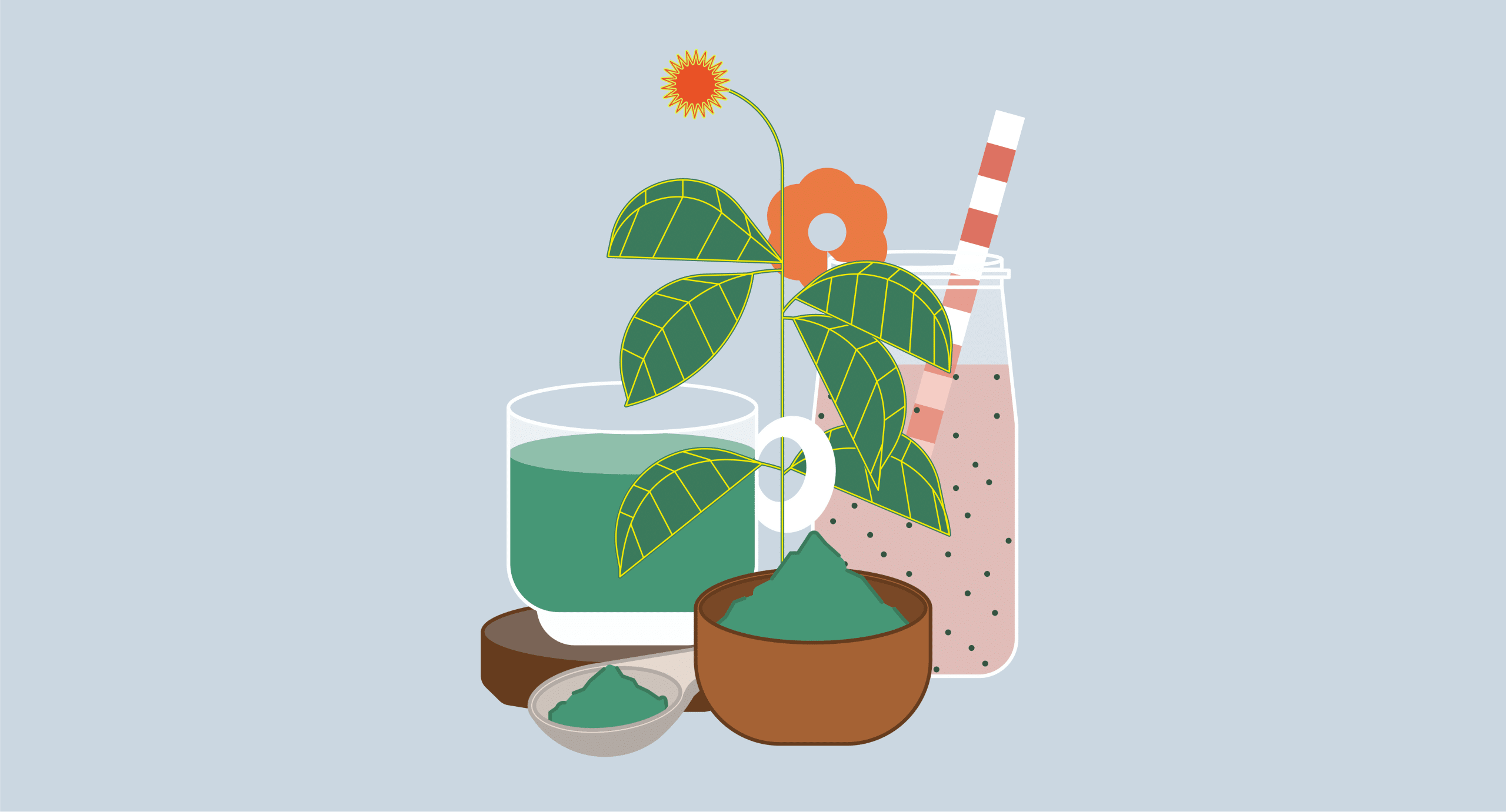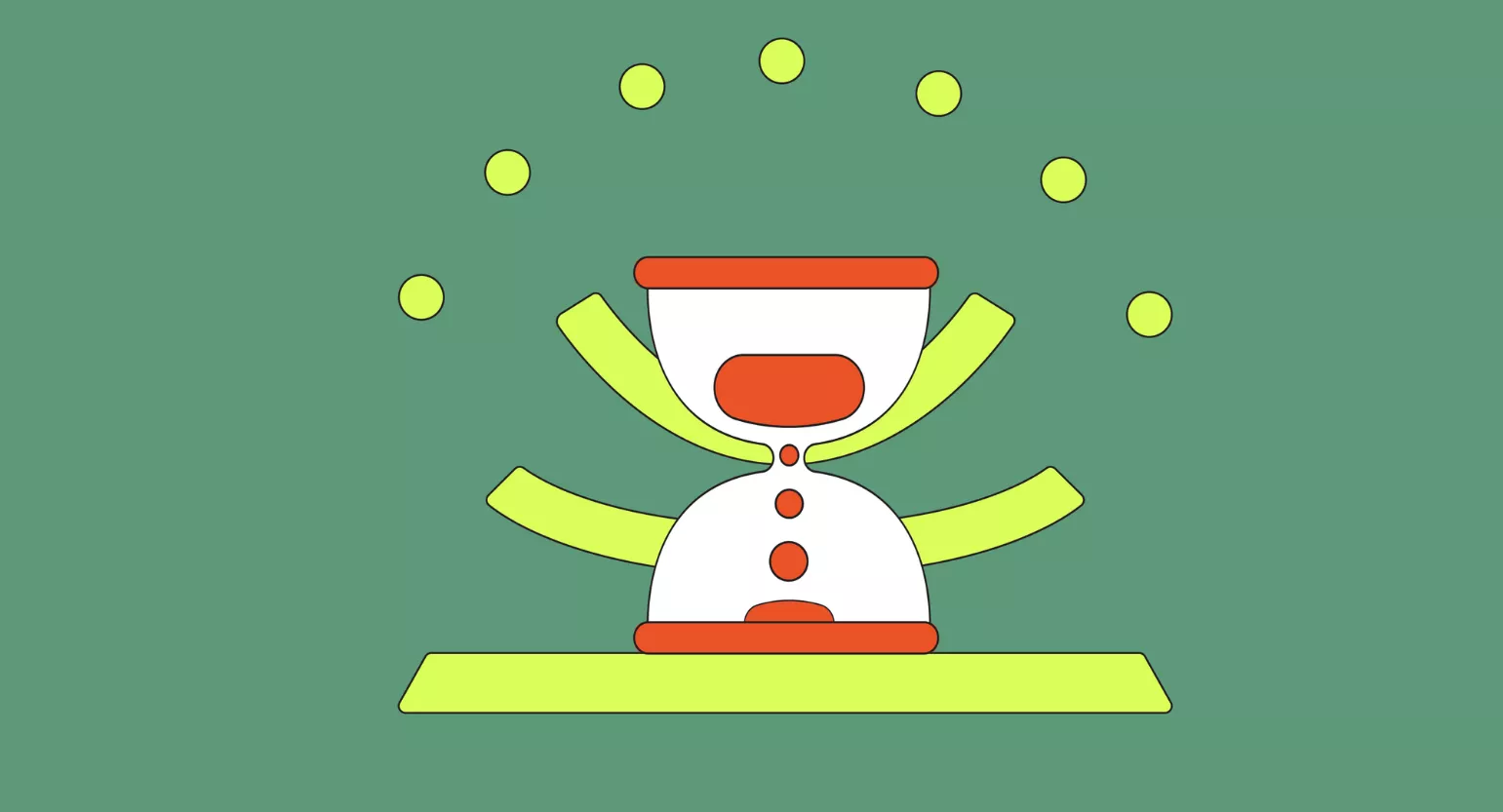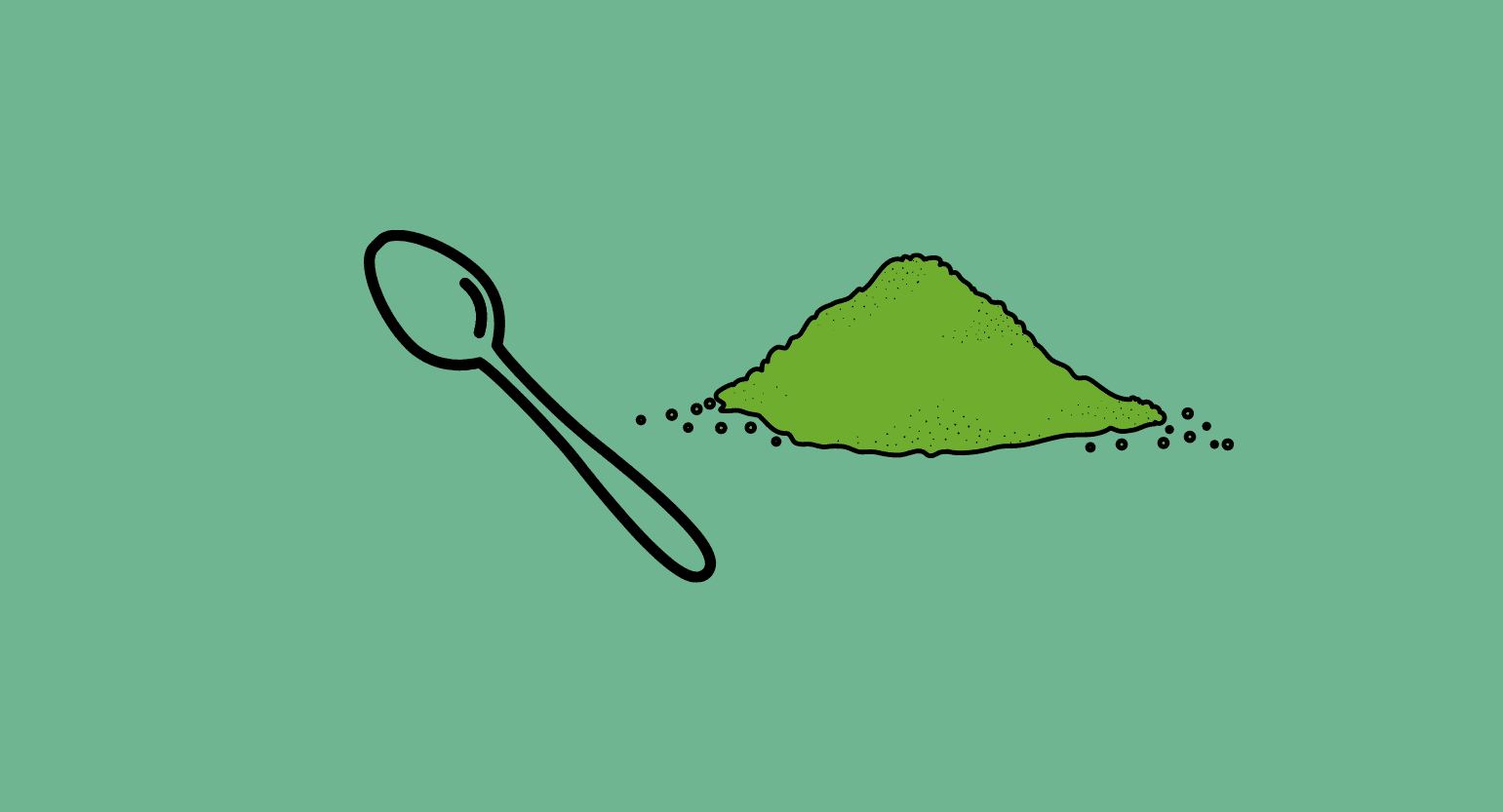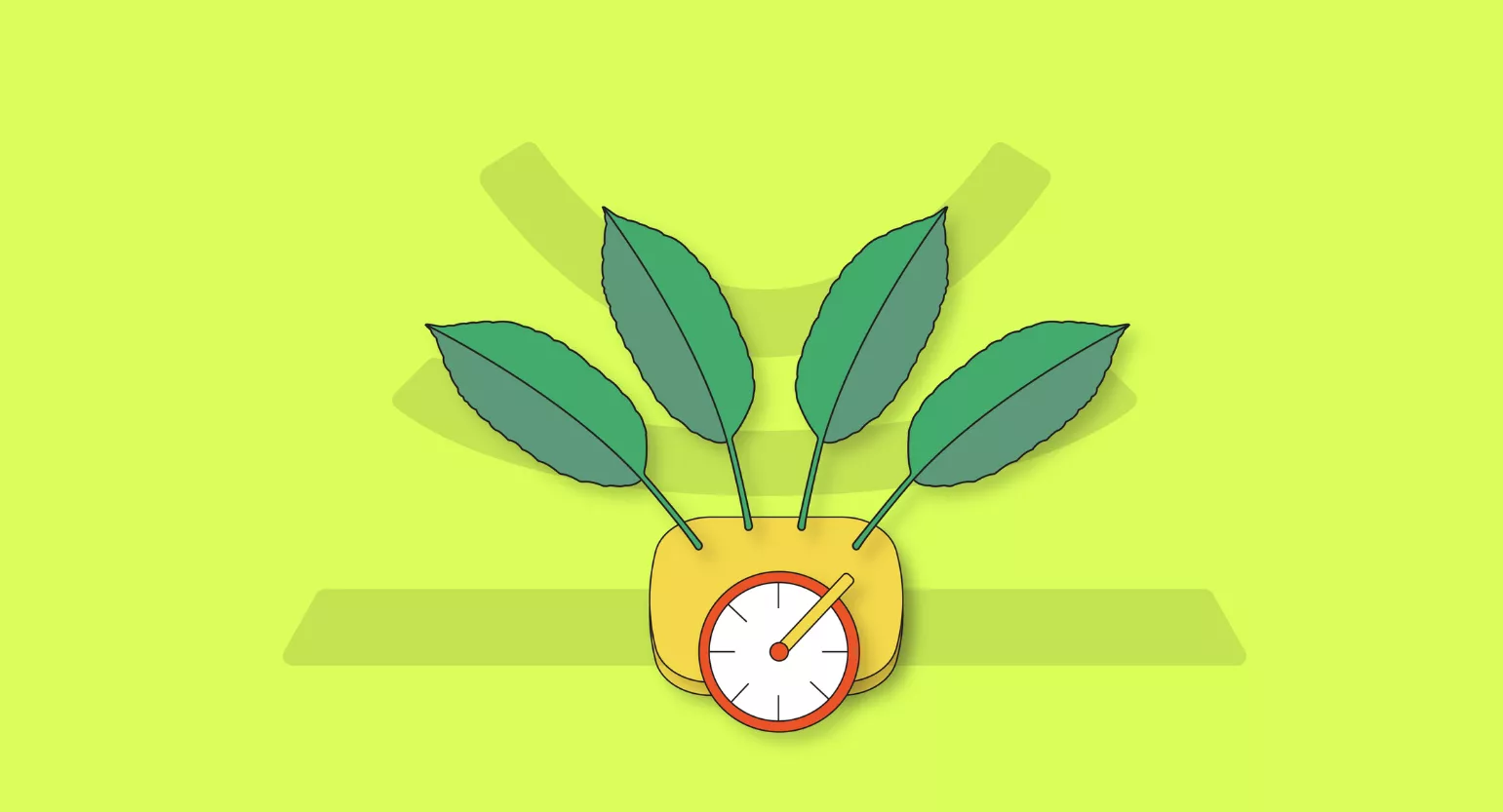Khat vs. Kratom: A Comparison Chart
The following chart gives a quick look at some of the most critical aspects of the two plants.
| Khat | Kratom | |
| Active Ingredients | Cathine and cathinone | Mitragynine, 7-hydroxymitragynine, & other alkaloids |
| Psychoactivity | No | Mild |
| Origin | Middle East, East Africa | Southeast Asia |
| Main Benefits | Reduced appetite, improved concentration, euphoria | Helps with pain, anxiety, depression, addiction, and energy |
| Pain Support | Believed in providing a low level of pain support. | Believed in providing a moderate-to-high level of pain support |
| Mood Support | It may produce an energetic feeling | It may produce a sense of well-being and peace |
| Level of Safety | Moderate risk | Low to moderate risk |
| Dose | 100 grams to 300 grams of fresh leaves | 2 grams to 12 grams |
| Legality | Cathinone is a Schedule I Drug | Federally legal; state laws vary |
What is Khat?
Khat is a flowering plant that grows in Africa and the Middle East. In its native areas, indigenous people have chewed on khat leaves for thousands of years. Its two main alkaloids, cathine and cathinone, provide stimulant effects similar to ephedrine.
Khat is extremely popular in Yemen; as many as 90 percent of men, 73 percent of women, and even 15-20 percent of children partake regularly.
It makes up approximately 30 percent of Yemen’s groundwater usage and represents up to 50 percent of each household’s purchases.
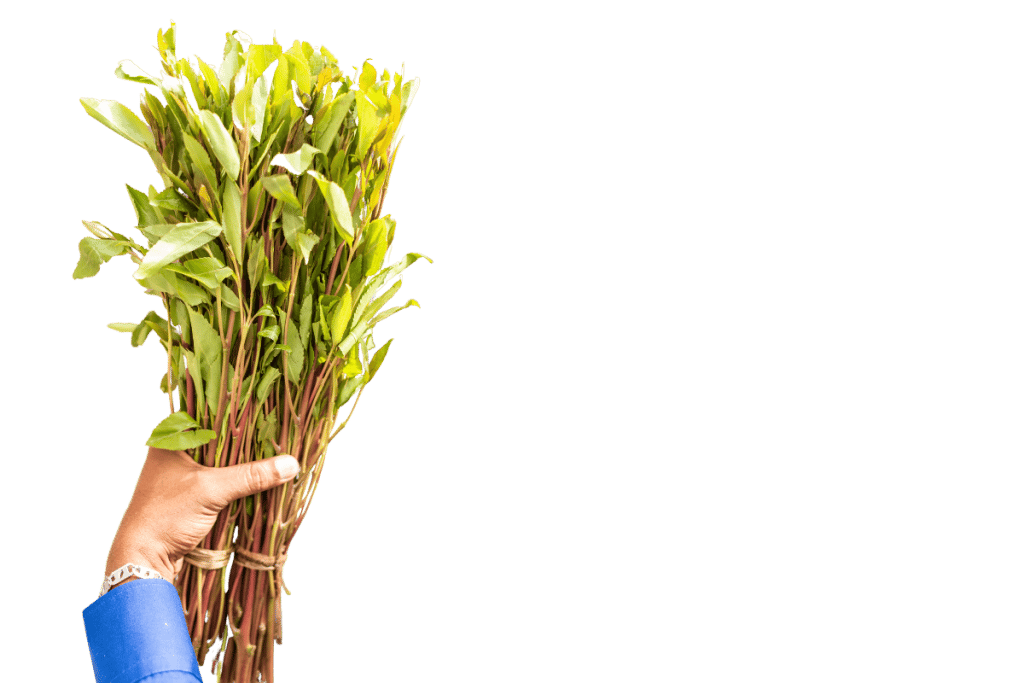
People traditionally use khat for multiple reasons. In Harar, for example, users chew it for entertainment, religion, and work [1]. Evidence shows that the people of Harar started chewing khat before the 19th century.
Unfortunately, regularly consuming khat can lead to addiction, resulting in high rates of ill health among those affected. In addition, its use is associated with significant economic and social consequences.
What is Kratom?
Kratom (Mitragyna speciosa) is a close relative of the coffee plant. The leaves of kratom plants grow in Southeast Asia. In countries like Thailand, Vietnam, Indonesia, and Malaysia, workers have chewed the leaves to endure long labor shifts in the fields.
Its alkaloid content varies and is what gives the strains their unique effects. Mitragynine and 7-hydroxymitragynine are the two dominant alkaloids and give kratom its energizing and sedative effects.
Kratom has a strong taste that most people don’t like. Many users make it into a tea or take it in capsule format to avoid the bitter taste.
There are many different kratom strains with varying effects, giving you greater control over the impact you feel.
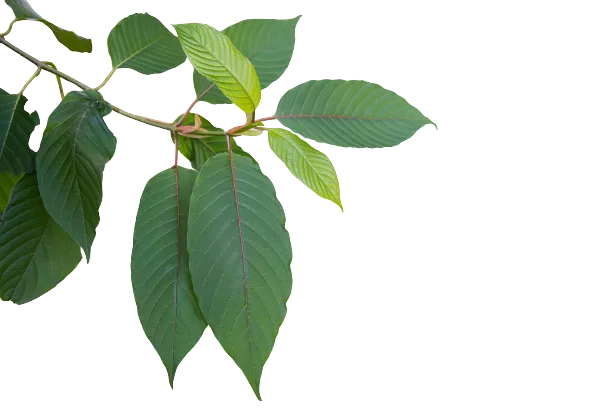
Kratom can be categorized into three strains:
- Red Vein Kratom Strains — the most sedative and analgesic strains.
- White Vein Kratom Strains — the most euphoric and energy-boosting strains.
- Green Vein Kratom Strains — a middle-ground between the red and white strains.
Kratom usage is cultural, too, and can come with similar societal problems. The biggest difference is in the strength of the addiction. Kratom addiction is less severe and easier to break; in fact, it can help ease the symptoms of opioid withdrawal.
It also helps with many issues that usually require prescription drugs, like depression, anxiety, chronic pain, and insomnia. While kratom isn’t a cure, it often nudges users into a more normal life.
Pain Management: Khat vs. Kratom
Kratom has a long history of helping people manage pain. Centuries ago, people used it to combat back pain, arthritis, and severe headaches or migraines.
Other conditions where people use kratom as a painkiller are:
Khat offers less strength in terms of pain management. However, a study published in 2000 by the Journal of Pharmacy and Pharmacology showed evidence that khat had similar analgesic benefits to ibuprofen and amphetamines in mice [2].
Mood Support: Khat vs. Kratom
Similarly to ephedrine and other stimulants, khat can provide an energy boost shortly after intake. However, khat’s effects wear off quickly, and there have been cases of people experiencing reactive depression symptoms. There is also evidence that shows khat could worsen the symptoms in those with pre-existing psychiatric diseases [3].

On the other hand, kratom is often used as a mood enhancer. Regularly, kratom effects kick in after 20-30 minutes, lasting about 2-3 hours. It’s powerfully euphoric while you’re on kratom. Afterward, the effect wears off and puts you back to square one.
Benefits & Side Effects: Khat vs. Kratom
Kratom is safer and has only been linked to deaths when mixed with other substances. Kratom can be addictive, though this takes long-term use, and withdrawal symptoms are less severe than with opiates.
The overall risk of death from khat and kratom is low, but khat has a higher risk of severe side effects and death.
Why do people take these in the first place? They both come with some attractive benefits. Unfortunately, these benefits can lead to addiction, especially when it comes to khat.
Khat’s Benefits
When you first chew khat, it causes many acute effects [4], including the following:
- Appetite suppression
- Boosted work performance
- Energy boost
- Euphoria
- Excitement
- Increased concentration
- Increased heart rate and blood pressure
- Increased imagination
- Increased inhibition
- Increased locomotor activity
- Increased mental alertness
- Increased wellbeing
- Libido boost
- Talkativeness
Kratom’s Benefits
Kratom also has several benefits. These vary based on the strain and dose you take but may include:
- Addiction management (works well for opiate & benzodiazepine withdrawal)
- Clarity of mind
- Energy boost
- Euphoria
- Helps you sleep
- Increased focus
- Pain relief
- Reduces high blood pressure
- Relieves anxiety
- Sedative
- Stimulation
Using any substance long-term can cause problems. Sometimes the benefits outweigh the risks, but not always. Here’s a look at the side effects you could face from the extended use of khat or kratom.
Khat’s Side Effects
Khat comes with several safety risks and is addictive. It can increase the risk of cardiovascular, gastrointestinal, central nervous system, obstetric, and genitourinary diseases. It’s also believed to cause cancer in some cases [5].
Khat’s risk of death is relatively low, but it does happen. For instance, 13 people in the UK died from taking khat from 2004-2009 [6].
Numerous potential side effects indicate that khat isn’t safe [7]. These include:
- Acute myocardial infarction
- Anxiety
- Constipation
- Depression
- Elevated blood pressure
- Elevated heart rate
- Gastritis
- Insomnia
- Lack of concentration
- Numbness
- Periodontal disease
Taking khat regularly (defined as at least three times per week), or suffering from khat withdrawal, can lead to the following:
- Anxiety
- Cravings
- Delusions
- Hypnagogic hallucinations
- Insomnia
- Irritability
- Lack of concentration
- Loss of appetite
- Low Mood
- Manic behavior
- Numbness
- Restlessness
- Suicidal thoughts
- Tremors
- Violence
Kratom’s Side Effects
Most side effects of kratom become noticeable after two to eight weeks of regular usage. These include:
- Anxiety or nervousness
- Dizziness
- Headaches
- Insomnia
- Itchy skin
- Loss of muscle coordination
- Low blood pressure
- Nausea
- Poor appetite
- Seizures
Kratom can be addictive with long-term usage. Fortunately, it’s much less addictive than opioids.
When tapering off kratom, people may also show symptoms of kratom withdrawal, including:
- Constipation
- Diarrhea
- Dysphoria
- High blood pressure
- Irritability
- Itching
- Muscle pain
- Nausea
- Sweating
Legality: Khat vs. Kratom
Khat itself is not illegal, but its main compounds are. Cathinone is federally a Schedule I Drug, and cathine is a Schedule IV Drug. States can choose to make contradictory laws, though.

On the other hand, kratom is federally legal though some states have banned it.
Kratom is easily accessible online or in local shops if it’s legal where you live.
Key Takeaways: Khat vs. Kratom
Khat and kratom both have pros and cons.
If you’re looking for a way to deal with the withdrawal symptoms of opioid addiction, kratom is definitely the best choice. Kratom is also generally safer to take than khat and has fewer symptoms when you stop taking it.
Another big bonus for kratom is that it’s legal throughout most of the US Khat is illegal in the US and has been since 1993.
No matter which one you choose to take, be careful of any potential side effects. Overall, though, kratom is considered safer, making it the better choice.
- Gudata, Z. G. (2020). Khat culture and economic wellbeing: Comparison of a chewer and non-chewer families in Harar city. Cogent Social Sciences, 6(1), 1848501.
- Connor, J., Makonnen, E., & Rostom, A. (2000). Comparison of analgesic effects of khat (Catha edulis Forsk) extract, D-amphetamine, and ibuprofen in mice. Journal of Pharmacy and Pharmacology, 52(1), 107-110.
- Hassan, N. A., Gunaid, A. A., El-Khally, F. M., & Murray-Lyon, I. M. (2002). The effect of chewing khat leaves on human mood. Neurosciences Journal, 7(3), 184-187.
- Wabe, N. T. (2011). Chemistry, pharmacology, and toxicology of khat (catha edulis forsk): a review. Addiction & health, 3(3-4), 137.
- Malasevskaia, I., Al-Awadhi, A. A., & Mohammed, L. (2020). Tea in the Morning and Khat Afternoon: Health Threats Due to Khat Chewing. Cureus, 12(12).
- Corkery, J. M., Schifano, F., Oyefeso, A., Ghodse, A. H., Tonia, T., Naidoo, V., & Button, J. (2011). ‘Bundle of fun’ or ‘bunch of problems’? Case series of khat-related deaths in the UK. Drugs: education, prevention and policy, 18(6), 408-425.
- Ageely, H. M. (2008). Health and socio-economic hazards associated with khat consumption. Journal of family & community medicine, 15(1), 3.

